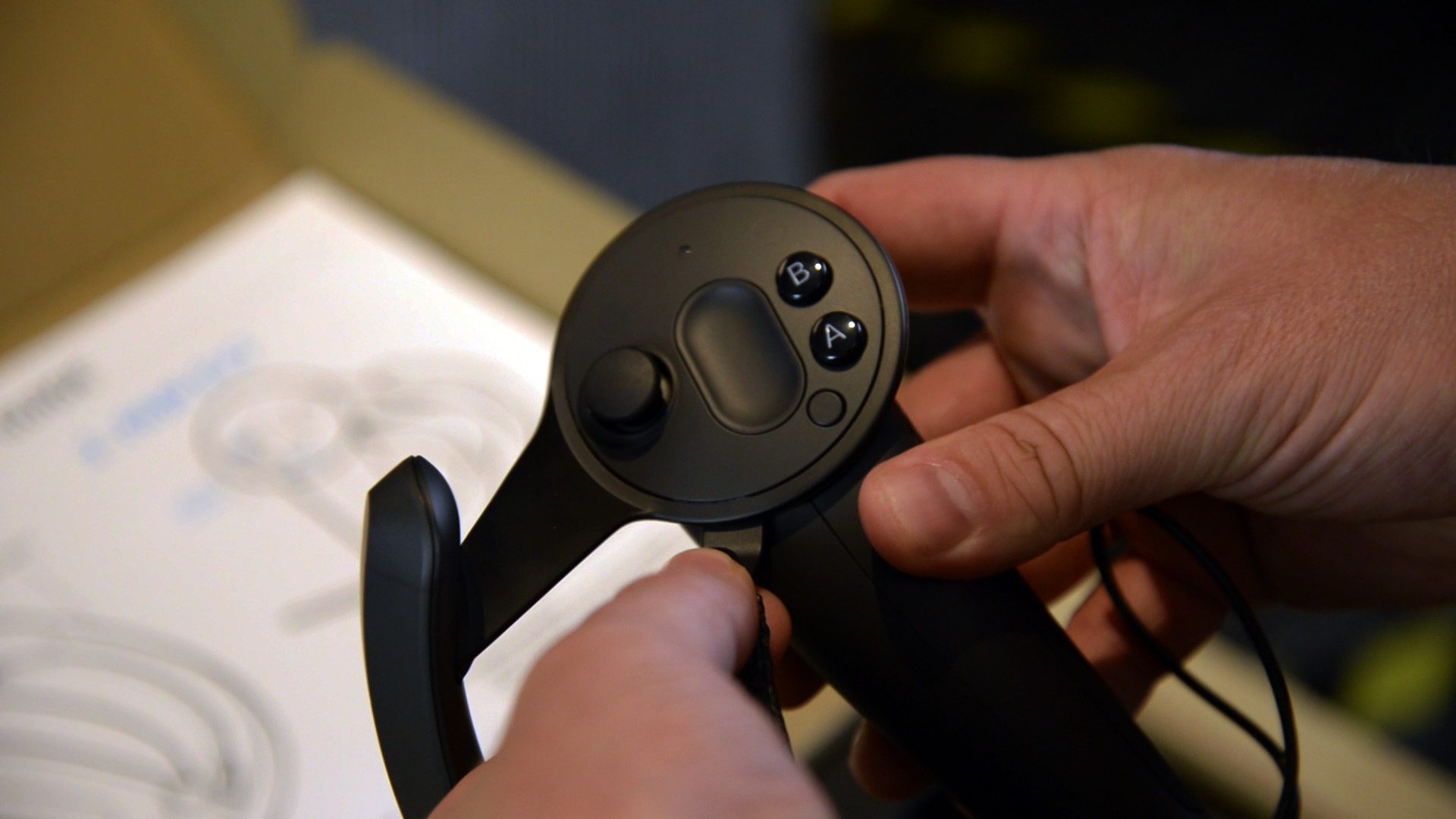Alien Trap’s Lee Vermeulen, one of the developers behind VR creation tool Modbox, received a brand new pair of Knuckles controllers recently. One of his first missions: show off Valve’s Skeletal Input system in detail, which was released in beta to developers late last month.
In a follow-up to his earlier video, which showed off how Valve’s SteamVR Skeletal Input works with a standard HTC Vive controller, Vermeulen has put together a new video that zeros in on the high level of hand presence Valve’s upcoming motion controller can afford a user.
Using a HTC Vive for AR passthrough and a Zed Mini stereoscopic camera to capture the scene outside the headset, Vermeulen puts Knuckles through its paces, giving us a good look of a 1:1 comparison of physical hand movements and how the match up to the virtual counterparts.

As seen in the video, Valve’s SteamVR Skeletal Input essentially does the job of estimating where a user’s fingers are at any given moment, and reproducing an in-game hand model to match. Data is gathered from Knuckles’ integrated capactive sensors, which are on many parts of the controller including its touchpads, control sticks, buttons, and capacitive ‘hot spots’, which line the grip of the controllers to capture individual finger movements. The Knuckles dev kit seen in the video is the company’s latest public iteration—a critical redesign of the previous, control stick-less design.
In the video, Vermeulen demonstrates how Skeletal Input behaves both with and without a controller rendered in his hand. Featuring an ‘open palm’ design, he can even pet his cat while keeping the controllers strapped on.
There’s still no word on consumer release of Knuckles, but the fact that Valve has already seeded big studios and indie developers alike with the motion controller dev kit means that hand presence is definitely the next big area of development for SteamVR hardware ecosystem and the apps therein. We’re certainly hoping for SteamVR base station-capable headsets, such as HTC Vive, to finally get access to greater hand presence—something Oculus Rift owners have had (albeit to a lesser extent than Knuckles) via the system’s 2016-era dedicated motion controllers, Oculus Touch.






